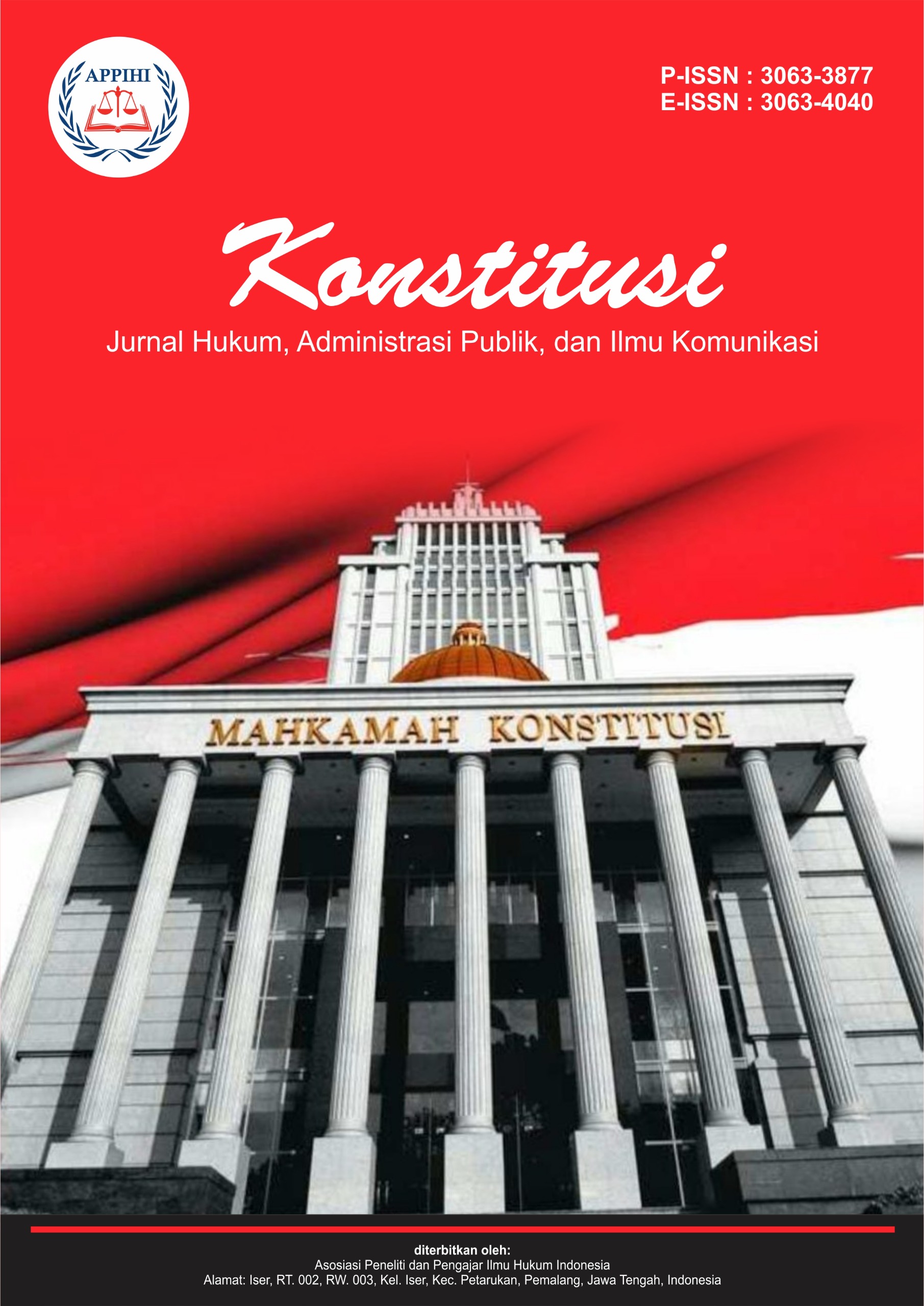Peran United Nations Office on Drugs And Crime dalam Mendukung Implementasi Kampanye Hati Biru di Meksiko
DOI:
https://doi.org/10.62383/konstitusi.v2i2.627Keywords:
Mexico, cartel, Human trafficking, UNODC, Blue heart campaignAbstract
Mexico is one of the countries in Latin America that is still under threat from cartels or criminal organizations every day. National security is one of Mexico's weaknesses because cartels continue to grow and expand their influence, so that criminal activities such as human trafficking still often occur in the country. This article will discuss how the United Nations Office on Drugs and Crime (UNODC) supports the implementation of the Blue Heart Campaign in combating human trafficking that continues to threaten the lives of Mexican citizens. Human trafficking is an international issue or problem because this activity occurs in almost all countries in the world and is operated by various criminal organizations that disrupt the stability of security and peace in these countries, in this article human trafficking must be eliminated from the root of the problem, namely cartels and governments that cannot fulfill their roles, thus causing social inequality in Mexico. The novelty in this study is the lack of data or literature in discussing the role of the United Nations Office on Drugs and Crime in supporting the implementation of the Blue Heart Campaign in Mexico.
Downloads
References
Brooks, D. (2025, Maret Minggu). Jasad manusia, ratusan sepatu dan surat perpisahan – Temuan memilukan di 'kamp pemusnahan' Meksiko. BBC News Mundo. https://www.bbc.com/indonesia/articles/cgr2lvndpd7o
Bryant, K., & Landman, T. (2020). Combatting human trafficking since Palermo: What do we know about what works? Journal of Human Trafficking, 6(2), 120–140.
CFR.org Editors. (n.d.). Mexico’s long war: Drugs, crime, and the cartels. Council on Foreign Relations. https://www.cfr.org/backgrounder/mexicos-long-war-drugs-crime-and-cartels#chapter-title-0-2
Chomczyński, P. A., & Guy, R. (2021). ‘Our biographies are the same’: Juvenile work in Mexican drug trafficking organizations from the perspective of a collective trajectory. The British Journal of Criminology, 61(4), 946–964.
Christiastuti, N. (2025, Februari Kamis). AS tetapkan kartel narkoba termasuk Sinaloa sebagai teroris global. detiknews. https://news.detik.com/internasional/d-7787796/as-tetapkan-kartel-narkoba-termasuk-sinaloa-sebagai-teroris-global
Dr Sanja Milivojevic, H. M. (2020). Freeing the modern slaves, one click at a time: Theorising human trafficking, modern slavery, and technology. Anti-Trafficking Review, 14, 16–32.
Francis, S. W. (2024). Improving the estimate of trafficking in human beings and modern slavery by integrating data from ILO/Walk Free/IOM and UNODC. Springer Nature, 670–693.
Garcia, D. N. (2023). Mexican narcos have grown Twitter presence since the Musk takeover. ACCO (Alliance to Counter Crime Online).
Giménez-Salinas, A. (2024). Female offenders in human trafficking: Analyzing roles in a Spanish sample. MDPI, 1–12.
Glowacki, P. (2023). Human trafficking and its impact on human life, society and law. SUNY Journal, 1–27.
İmamoğlu, S. U. (2020). Anti-trafficking policy and practices around the world. The Journal of Migration Studies, 390–412.
Izcara-Palacios, S. P. (2023). Sex trafficking in Mexico: Perpetrators’ profile. ResearchGate, 1–23.
Jagoe, C. (2022). Disability and the risk of vulnerability to human trafficking: An analysis of case law. Journal of Human Trafficking, 8(1), 1–15.
Kehl, M. (2020). Human trafficking in the age of the internet. ProQuest, 1–36.
Krame, G., Vivado, V., & Davies, A. (2023). Narco drones: Tracing the evolution of cartel aerial tactics in Mexico’s low-intensity conflicts. Taylor and Francis Online, 45(7), 1096–1129.
Laporan Organisasi dan Sumber Institusional:
Matza, M., & Grant, W. (2024, Juli Jumat). Pemimpin kartel narkoba Sinaloa Meksiko ditangkap di Texas. BBC. https://www.bbc.com/news/articles/c4ng4g31x1wo
Mendoza, C. (2024, Juni Selasa). Menang telak dalam pemilu, Sheinbaum jadi presiden perempuan pertama Meksiko. Voice of America (VOA). https://www.voaindonesia.com/a/menang-telak-dalam-pemilu-sheinbaum-jadi-presiden-perempuan-pertama-meksiko-/7641922.html
Mendoza, F. J. (2025). Cartelnomics: The impact of drug trafficking organizations on business dynamics in Mexico. SSRN, 1–88.
Mestika, Z. (2008). Metode penelitian kepustakaan. Yayasan Obor Indonesia.
Murray, J.-P. D. (2022). The UNODC and the human rights approach to human trafficking: Explaining the organizational (mis)fit. ResearchGate, 108–136.
Stöck, H. (2021). Human trafficking and violence: Findings from the largest global dataset. Journal of Migration and Health, 3, 1–6.
Tamayo G, R. (2023). How drug cartels utilise social media. International Master Security, Intelligence & Strategic Studies, 1–87.
Teiner, D. (2020). Cartel-related violence in Mexico as narco-terrorism or criminal insurgency: A literature review. JSTOR, 18(2), 83–98.
UNODC. (2021, August Monday). The Blue Heart Campaign reaches indigenous communities in Mexico. https://www.unodc.org/unodc/en/frontpage/2021/August/the-blue-heart-campaign-reaches-indigenous-communities-in-mexico.html
UNODC. (n.d.). Blue Heart Campaign. https://www.unodc.org/unodc/en/blueheart/
UNODC. (n.d.). Human trafficking and migrant smuggling. https://www.unodc.org/unodc/en/human-trafficking/index.html
UNODC. (n.d.). UNODC (About us). https://www.unodc.org/unodc/en/about-unodc/index.html
Velasco, O. C. (2023). Unintended consequences of state action: How the kingpin strategy transformed the structure of violence in Mexico’s organized crime. Springer Nature, 1–25.
Downloads
Published
How to Cite
Issue
Section
License
Copyright (c) 2025 Konstitusi : Jurnal Hukum, Administrasi Publik, dan Ilmu Komunikasi

This work is licensed under a Creative Commons Attribution-ShareAlike 4.0 International License.






